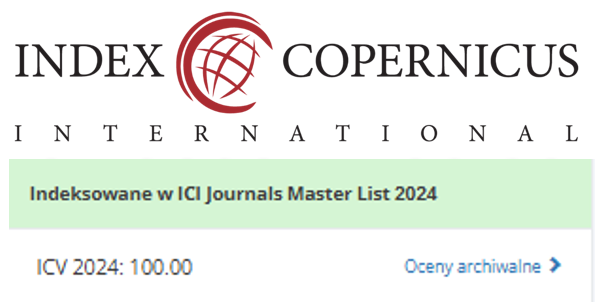Maternal Knowledge of Stunting in Toddlers: A Cross-Sectional Study in Indonesia
DOI:
https://doi.org/10.55018/janh.v7i3.383Keywords:
Stunting, Maternal Knowledge, Preschool Child, Health EducatioAbstract
Background: Stunting remains a major public health issue in Indonesia, where maternal knowledge is a critical factor for prevention. However, limited evidence exists regarding the specific knowledge gaps of mothers in semi-urban communities in Indonesia, which hampers targeted interventions. This study aimed to analyze maternal knowledge levels regarding stunting and its associated factors.
Methods: This research utilized a descriptive cross-sectional design (reported according to STROBE guidelines) with 265 mothers of toddlers selected via stratified random sampling. Sample size justification and detailed inclusion/exclusion criteria were included. A validated and reliable questionnaire (Cronbach's α=0.87) was used. Data were analyzed using the Chi-Square test.
Results: Most respondents (71.7%) had a good knowledge level. However, a statistically significant knowledge deficit was found concerning the specific causes of stunting (χ2=49.900;p<0.001). Factors such as education and employment status were significantly associated with knowledge levels.
Conclusion: While general awareness of stunting is high, a critical gap exists in mothers' understanding of its complex causes. Educational interventions must become more focused. Future studies should employ longitudinal or interventional designs to assess the causal pathways between maternal knowledge and stunting prevention behaviors (Harmonized with Practical Implications).
Downloads
References
Adane, M., Mengistie, B., Kloos, H., Medhin, G., & Mulat, W. (2017). Sanitation facilities, hygienic conditions, and prevalence of acute diarrhea among under-five children in slums of Addis Ababa, Ethiopia: Baseline survey of a longitudinal study. PLOS ONE, 12(8), e0182783. https://doi.org/10.1371/journal.pone.0182783
Alzghoul, B. I., & Abdullah, N. A. C. (2015). Pain Management Practices by Nurses: An Application of the Knowledge, Attitude and Practices (KAP) Model. Global Journal of Health Science, 8(6), 154–160. https://doi.org/10.5539/gjhs.v8n6p154
Bagamian, K. H., Anderson Iv, J. D., Blohm, G., & Scheele, S. (2023). Shigella and childhood stunting: Evidence, gaps, and future research directions. PLoS Neglected Tropical Diseases, 17(9), e0011475. https://doi.org/10.1371/journal.pntd.0011475
Celestino, J. M. T., Lating, P. O., Nabuuma, B., & Yiga, V. A. (2023). Effects of clay, gum Arabic and hybrid binders on the properties of rice and coffee HUSK briquettes. Results in Engineering, 20, 101488.
Choufani, A., & Barakat, R. (2023). The Knowledge, Attitude, and Practice of Lebanese Mothers Toward Their Children’s Oral Health: A Cross-Sectional Survey. Cureus, 15(8), e42903. https://doi.org/10.7759/cureus.42903
Dewi, M., & Aminah, M. (2016). Pengaruh edukasi gizi terhadap feeding practice ibu balita stunting usia 6-24 bulan (the effect of nutritional knowledge on feeding practice of mothers having stunting toddler aged 6-24 months). Indonesian Journal of Human Nutrition, 3(1), 1–8.
Fauziah, N., & Sukmawati, W. (2023). Stacking analysis of higher thinking skills of class V elementary school students on the material of movement organs using the RADEC model. Jurnal Penelitian Pendidikan IPA, 9(7), 5263–5270.
Freer, J., Orr, J., Walton, R., Storr, H. L., Dunkel, L., & Prendergast, A. J. (2023). Does stunting still matter in high-income countries? Annals of Human Biology, 50(1), 267–273. https://doi.org/10.1080/03014460.2023.2216022
Gat-Yablonski, G., & Phillip, M. (2015). Nutritionally-induced catch-up growth. Nutrients, 7(1), 517–551. https://doi.org/10.3390/nu7010517
Ghaferi, A. A., Schwartz, T. A., & Pawlik, T. M. (2021). STROBE Reporting Guidelines for Observational Studies. JAMA Surgery, 156(6), 577–578. https://doi.org/10.1001/jamasurg.2021.0528
Hajri, T., Angamarca-Armijos, V., & Caceres, L. (2021). Prevalence of stunting and obesity in Ecuador: a systematic review. Public Health Nutrition, 24(8), 2259–2272. https://doi.org/10.1017/S1368980020002049
Hiew, S. Y., & Low, B. Y. (2024). The knowledge, attitude, and practice of the public regarding household pharmaceutical waste disposal: a systematic review (2013-2023). The International Journal of Pharmacy Practice, 32(2), 120–132. https://doi.org/10.1093/ijpp/riae001
Kamariyah, N., Putri, R. A., Setiyowati, E., & Afiyah, R. K. (2024). Gerakan Seribu Hari Pertama Kehidupan Terhadap Sikap, Perilaku, Dan Tingkat Kemandirian Tindakan Pencegahan Kejadian Stunting: Movement for the First Thousand Days of Life on Attitudes, Behavior and Level of Independence, Actions to Prevent Stunting Event. Jurnal Abdi Kesehatan Dan Kedokteran, 3(1 SE-Articles), 34–47. https://doi.org/10.55018/jakk.v3i1.48
Kang, K., & Bagaoisan, M. A. P. (2024). Research Status of the Knowledge-Attitude-Practice Theory Model in Gastric Cancer Prevention. Cureus, 16(7), e64960. https://doi.org/10.7759/cureus.64960
Mulyaningsih, T., Mohanty, I., Widyaningsih, V., Gebremedhin, T. A., Miranti, R., & Wiyono, V. H. (2021). Beyond personal factors: Multilevel determinants of childhood stunting in Indonesia. PloS One, 16(11), e0260265. https://doi.org/10.1371/journal.pone.0260265
Mustakim, M. R. D., Irwanto, Irawan, R., Irmawati, M., & Setyoboedi, B. (2022). Impact of Stunting on Development of Children between 1-3 Years of Age. Ethiopian Journal of Health Sciences, 32(3), 569–578. https://doi.org/10.4314/ejhs.v32i3.13
Sahoo, S. S., Erlacher, M., & Wlodarski, M. W. (2025). Genetic and clinical spectrum of SAMD9 and SAMD9L syndromes: from variant interpretation to patient management. Blood, 145(5), 475–485. https://doi.org/10.1182/blood.2022017717
Sallam, M., Salim, N. A., Barakat, M., Al-Mahzoum, K., Al-Tammemi, A. B., Malaeb, D., Hallit, R., & Hallit, S. (2023). Assessing Health Students’ Attitudes and Usage of ChatGPT in Jordan: Validation Study. JMIR Medical Education, 9, e48254. https://doi.org/10.2196/48254
Seneadza, N. A. H., Insaidoo, G., Boye, H., Ani-Amponsah, M., Leung, T., Meek, J., & Enweronu-Laryea, C. (2022). Neonatal jaundice in Ghanaian children: Assessing maternal knowledge, attitude, and perceptions. PloS One, 17(3), e0264694. https://doi.org/10.1371/journal.pone.0264694
Sojitra, B., Patel, C., Pandya, S., Virani, P., Shah, P., Patel, J., & Shah, A. (2024). Knowledge, Attitude, and Practice of Materiovigilance Among Healthcare Professionals at a Tertiary Care Teaching Hospital. Cureus, 16(7), e64978. https://doi.org/10.7759/cureus.64978
Zarei, F., Dehghani, A., Ratansiri, A., Ghaffari, M., Raina, S. K., Halimi, A., Rakhshanderou, S., Isamel, S. A., Amiri, P., Aminafshar, A., & Mosavi Jarrahi, A. (2024). ChecKAP: A Checklist for Reporting a Knowledge, Attitude, and Practice (KAP) Study. Asian Pacific Journal of Cancer Prevention : APJCP, 25(7), 2573–2577. https://doi.org/10.31557/APJCP.2024.25.7.2573
Downloads
Published
How to Cite
Issue
Section
License
Copyright (c) 2025 Rosmiati Rosmiati, Eka Wulansari, Marhumi Marhumi

This work is licensed under a Creative Commons Attribution-ShareAlike 4.0 International License.


















